Financial fraud detection software equips businesses with the necessary tools and algorithms to identify and prevent fraudulent activities in financial transactions. These solutions employ various technologies such as machine learning, behavioral analytics, and big data analysis to detect anomalies and suspicious patterns in real-time.
Financial fraud detection software is critical for organizations handling financial transactions to secure their operations and protect against losses due to fraud. These tools enable companies to detect unusual activity quickly, reducing the risk of significant financial damage and enhancing customer trust. This is particularly vital in sectors like banking, e-commerce, and insurance, where the volume and speed of transactions can hide fraudulent activities. By implementing robust fraud detection mechanisms, businesses can stay ahead of fraudsters, minimize operational risks, and adhere to regulatory compliance standards.
What are the benefits of financial fraud detection software?
The benefits of financial fraud detection software are numerous:
- Enhanced Security: Protects against various types of fraud, including payment fraud and identity theft.
- Real-Time Monitoring: Allows for immediate detection and response to suspicious activities.
- Increased Efficiency: Automates the fraud detection process, reducing the workload on human analysts.
- Improved Accuracy: Advanced algorithms reduce false positives and enhance the precision of fraud detection.
- Regulatory Compliance: Helps organisations meet industry standards and regulatory requirements.
- Customer Trust: By securing transactions, businesses can enhance customer confidence and loyalty.
Before selecting a financial fraud detection software, organizations must carefully assess their specific security needs, the scale of their operations, and the software’s compatibility with their current systems. Other critical factors to consider include the vendor's reputation, customer support services, compliance with industry standards, and the overall return on investment.
Features To Look for in Financial Fraud Detection Software
Selecting the right financial fraud detection software is essential for protecting your business against fraud and ensuring compliance with regulations. Here are the key features to consider when evaluating options:
- Anomaly Detection: Look for software that uses advanced statistical and machine learning algorithms to identify deviations from normal behavior. This helps in spotting suspicious activities early.
- Real-Time Processing: Choose a solution that analyzes transactions in real-time, providing immediate alerts and responses to potential threats.
- Scalability and Robustness: Ensure the software can handle increasing transaction volumes and data loads as your business grows, maintaining performance and accuracy.
- Integration Capabilities: The software should integrate smoothly with your existing financial systems, e-commerce platforms, and security infrastructure, without causing disruptions.
- User Behavior Analytics: Effective systems utilize behavioral biometrics and heuristics to monitor user habits and detect anomalies that might indicate fraud.
- Adaptive Intelligence: The software should learn from new data and continuously improve its detection algorithms, adapting to evolving fraud tactics.
- Customization and Flexibility: Opt for a solution that allows customization of rules, thresholds, and policies to match your specific business needs and risk profile.
- Multi-Layered Security: Advanced software employs multiple layers of security to address various fraud vectors, providing comprehensive protection.
- Global Threat Intelligence: Look for systems that leverage global threat intelligence to stay updated with the latest fraud tactics and techniques worldwide.
- Comprehensive Reporting and Analytics: The software should offer detailed reporting and analytics to assist in forensic analysis and improve future fraud prevention measures.
- Integration Ease: Evaluate how well the software integrates with your current systems. It should support various data formats and communication protocols for seamless operation.
- Regulatory Compliance: Ensure the software complies with relevant financial regulations and data protection laws, facilitating adherence to industry standards.
- User Interface and Experience: A user-friendly interface is crucial for managing fraud detection efforts efficiently. Look for clear, actionable insights and easy access to detailed reports and settings.
- Support and Training: Consider the level of customer support and training available. Good support can ease the implementation process and help your team effectively use the software.
- Cost Effectiveness: Assess the software’s cost relative to its features and benefits. Consider both the initial purchase price and ongoing costs to ensure a good return on investment.
- Vendor Reputation and Reliability: Research the provider’s market reputation and reliability. Look for reviews and testimonials from similar industries to gauge their success and stability.
- Trial and Demo: Whenever possible, request a trial or demo to evaluate the software in action and ensure it meets your needs and integrates well with your systems.
While basic fraud detection tools form the first line of defense, the increasing sophistication of financial fraud calls for more advanced systems. These advanced solutions not only detect fraudulent activities more efficiently but also adapt to new threats, ensuring that businesses can protect their assets and maintain customer confidence in an ever-evolving threat landscape.
Top 10 Financial Fraud Detection Software for Your Business
Now let’s explore the top 5 financial fraud detection software options. This curated list details each software's essential features and suitability for various business requirements, aiming to empower you with the necessary information to choose the best software for addressing your fraud prevention challenges.
1. ThreatMetrix
ThreatMetrix is a comprehensive financial fraud detection software that integrates real-time analytics and machine learning to help businesses combat online fraud and cybercrime. It is particularly effective for organizations that require robust, adaptive security measures to protect against evolving threats.
Key Features:
- Digital Identity Network: Harnesses global shared intelligence from billions of transactions to identify high-risk activities and prevent fraud in real time.
- Dynamic Decision Platform: Combines analytics and decision-making capabilities to deliver insights and automated decisions across the customer journey.
- Behavioral Biometrics: Analyzes user interaction patterns to detect anomalies that may indicate fraudulent activity.
- Machine Learning Models: Employs advanced machine learning algorithms to improve fraud detection accuracy over time.
- Case Management: Provides a unified platform for managing fraud investigations and regulatory reporting.
Pros:
- Scalability: Efficiently handles a large volume of transactions, making it suitable for businesses of all sizes.
- Advanced Analytics: Utilizes cutting-edge technology to provide detailed insights into user behavior and potential security threats.
- High Detection Rates: Known for its effectiveness in identifying and mitigating complex fraud scenarios.
- Global Reach: Leverages data from international transactions to enhance security measures globally.
- Integration Ease: Easily integrates with existing IT systems without significant changes.
Cons:
- Complexity of Setup: Requires initial setup and tuning to match specific business needs.
- Resource Intensive: May require significant resources to manage and operate effectively, especially for larger enterprises.
- Cost Consideration: Can be a substantial investment, particularly for small to medium-sized enterprises.
ThreatMetrix vs. Nected
| Feature | ThreatMetrix | Nected |
| Real-time fraud detection | ✅ | ✅ |
| Machine learning capabilities | ✅ | ✅ |
| Global threat intelligence | ✅ | ✅ |
| User behavior analytics | ✅ | ✅ |
| Integration with existing systems | ✅ | ✅ |
| Adaptability to new threats | ✅ | ✅ |
| Customization flexibility | ❌ | ✅ |
| Scalability | ✅ | ✅ |
| Cost-effectiveness | ❌ | ✅ |
| User interface simplicity | ❌ | ✅ |
While both platforms provide powerful capabilities for detecting and preventing fraud, Nected may be the preferred choice for businesses looking for a more cost-effective, flexible, and user-friendly solution. Nected excels in offering tailored solutions that can adapt quickly to the specific needs and sizes of different businesses, ensuring a better fit for diverse operational environments.
2. Featurespace
Featurespace is a leading fraud detection solution that utilizes adaptive behavioral analytics and machine learning to detect and prevent fraud in real-time. It is particularly suited for organizations that require sophisticated fraud management capabilities to protect against a wide range of financial crimes.
Key Features:
- Adaptive Behavioral Analytics: Employs a unique approach that adapts to new fraud trends and individual behaviors, enhancing detection accuracy.
- ARIC™ Risk Hub: Integrates real-time decision-making capabilities that allow for instant fraud detection and prevention.
- Multi-Channel Protection: Offers protection across various transaction channels, including online, mobile, and in-branch transactions.
- Model Management: Allows for easy management of machine learning models with the ability to update and deploy them quickly.
- Customizable Dashboards: Provides tailored dashboards to monitor fraud cases, user activities, and operational metrics.
Pros:
- High Adaptability: Quickly adjusts to emerging fraud tactics and evolving customer behaviors without manual intervention.
- Comprehensive Coverage: Detects a wide range of fraud types, including account takeover, payment fraud, and application fraud.
- Real-Time Prevention: Processes transactions in real-time, reducing the window of opportunity for fraudsters to exploit.
- Cross-Platform Capability: Effectively integrates with a variety of platforms, enhancing the fraud protection across all customer touchpoints.
- Customer Support: Offers extensive customer support to ensure seamless integration and continuous operation.
Cons:
- Implementation Complexity: The initial setup and integration may require technical expertise and time to fine-tune.
- Cost: May be on the higher side, particularly for smaller businesses or those with lower transaction volumes.
- Resource Demands: Maintaining and operating the system can require substantial in-house expertise or additional training.
Featurespace vs. Nected
| Feature | Featurespace | Nected |
| Real-time fraud detection | ✅ | ✅ |
| Adaptive learning capabilities | ✅ | ✅ |
| Coverage across multiple channels | ✅ | ✅ |
| Ease of model management | ❌ | ✅ |
| Customizable reporting | ✅ | ✅ |
| Scalability | ✅ | ✅ |
| Integration ease | ❌ | ✅ |
| User interface simplicity | ❌ | ✅ |
| Cost-effectiveness | ❌ | ✅ |
| Comprehensive customer support | ✅ | ✅ |
While both platforms offer robust fraud detection capabilities, Nected stands out for its flexibility, cost-effectiveness, and ease of use, making it a particularly attractive option for businesses that prioritize a user-friendly and adaptable fraud prevention solution. Nected's tailored pricing and contract flexibility also make it an ideal choice for businesses looking to optimize their fraud prevention strategies without overextending their budgets.
3. Sift
Sift is a powerful fraud prevention software that leverages large-scale machine learning technology to help businesses detect and prevent payment fraud, account takeover, and abusive content in real-time. It is designed for organizations that deal with high volumes of online transactions and require a scalable solution to maintain secure operations.
Key Features:
- Large-Scale Machine Learning: Utilizes vast amounts of data to train models that accurately detect fraudulent activities.
- Real-Time Decision Making: Analyzes transactions as they happen, providing immediate responses to prevent fraud.
- Customizable Risk Scores: Offers businesses the ability to customize risk thresholds to fit their unique operational requirements.
- Abuse Prevention: Capable of identifying and mitigating different types of abuse, including spam, fake accounts, and scam content.
- Global Data Network: Benefits from a network effect by learning from data across all its customers, improving the detection algorithms over time.
Pros:
- Scalability: Effectively manages large volumes of transactions without compromising performance.
- Advanced Detection: Employs advanced analytics to pinpoint fraud before it impacts the business.
- Flexible Integrations: Integrates smoothly with various e-commerce platforms and payment systems.
- Dynamic Learning: Continuously improves its fraud detection capabilities as it processes new transactions.
- Industry Expertise: Provides insights and support from experts experienced in handling online fraud.
Cons:
- Complex Configuration: May require detailed setup and fine-tuning to align with specific business processes.
- Resource Intensity: Utilizing its full capabilities can demand significant resource investment in terms of time and expertise.
- Initial Cost: The cost might be higher initially, particularly for smaller businesses or startups.
Sift vs. Nected
| Feature | Sift | Nected |
| Real-time fraud detection | ✅ | ✅ |
| Machine learning-based detection | ✅ | ✅ |
| Abuse prevention capabilities | ✅ | ✅ |
| Customizable risk thresholds | ❌ | ✅ |
| Global data network | ✅ | ✅ |
| Integration ease | ❌ | ✅ |
| Scalability | ✅ | ✅ |
| User interface simplicity | ❌ | ✅ |
| Cost-effectiveness | ❌ | ✅ |
| Expert support | ✅ | ✅ |
While Sift provides extensive fraud prevention capabilities, Nected excels with its flexibility, user-friendly interface, and cost-effective pricing structure. Nected is particularly suitable for businesses looking for an adaptable solution that can be easily integrated and managed without extensive overhead or long-term financial commitments. This makes Nected a preferable choice for companies seeking to enhance their fraud detection systems while maintaining efficiency and scalability.
4. Kount
Kount is an advanced fraud prevention service that specializes in protecting online transactions from various types of fraud, including payment fraud, new account fraud, and account takeover. It's designed for businesses that require a robust, AI-driven approach to safeguard their online and mobile environments.
Key Features:
- AI-Driven Decisions: Utilizes artificial intelligence to analyze transaction data and assess risk in real time.
- Identity Trust Global Network: Leverages data from billions of transactions across its network to detect and prevent fraud effectively.
- Omni-Channel Protection: Offers comprehensive fraud prevention across all customer interaction points, including online, mobile, and in-store.
- Customizable Protection Levels: Allows businesses to tailor fraud prevention settings according to their specific risk tolerance and customer experience requirements.
- Enhanced Analytics: Provides detailed reports and analytics, aiding businesses in understanding fraud patterns and refining their defense strategies.
Pros:
- Wide Coverage: Effectively secures transactions across a variety of platforms and channels.
- High Accuracy: Known for its precise detection capabilities, minimizing false positives and negatives.
- Quick Integration: Can be integrated swiftly with existing systems, reducing setup time and complexity.
- Scalable Solutions: Scales efficiently to accommodate growth in transaction volume without degradation in performance.
- Experienced Support: Offers access to fraud prevention experts who assist with implementation and ongoing management.
Cons:
- Cost: May be higher than some competitors, especially for smaller businesses.
- Resource Requirements: Optimal use may require dedicated resources for management and analysis.
- Complex Feature Set: The extensive capabilities may require a learning curve for new users to fully utilize the system.
Kount vs. Nected
| Feature | Kount | Nected |
| AI-driven fraud detection | ✅ | ✅ |
| Global transaction network | ✅ | ✅ |
| Omni-channel protection | ✅ | ✅ |
| Customization of protection | ❌ | ✅ |
| Advanced analytics | ✅ | ✅ |
| Integration simplicity | ❌ | ✅ |
| Scalability | ✅ | ✅ |
| User-friendly interface | ❌ | ✅ |
| Cost-effectiveness | ❌ | ✅ |
| Expert support availability | ✅ | ✅ |
While Kount offers a powerful suite of tools for comprehensive fraud prevention, Nected stands out for its ease of integration, user-friendly interface, and cost-effective pricing. Nected’s flexible approach to contracts and pricing makes it an appealing option for businesses of all sizes seeking to enhance their fraud detection capabilities without committing to significant upfront costs or complex setups. This flexibility, combined with robust support and scalable solutions, positions Nected as a particularly attractive choice for businesses aiming to optimize their fraud prevention strategies.
5. SEON
SEON is a dynamic fraud prevention software that empowers businesses to fight fraud through real-time data enrichment, machine learning, and advanced analytics. Designed for enterprises that need an agile, data-driven approach to detect and prevent various forms of financial fraud, SEON is particularly effective in the e-commerce, fintech, and banking sectors.
Key Features:
- Real-Time Data Enrichment: Enhances user profiles by instantly pulling data from various online sources to confirm identities and assess risk.
- Machine Learning Algorithms: Utilizes proprietary machine learning models to analyze patterns and predict fraudulent behavior accurately.
- Flexible API Integration: Offers a versatile API that integrates seamlessly with existing systems, facilitating smooth implementation.
- Custom Rules Engine: Allows businesses to configure specific rules tailored to their risk thresholds and operational requirements.
- Modular Solutions: Provides the flexibility to choose only the features needed, optimizing both cost and performance.
Pros:
- Adaptability: Quickly adjusts to new fraud patterns and regulatory changes, ensuring compliance and up-to-date protection.
- Comprehensive Detection: Identifies a broad range of fraud types, from account takeovers to fake account creations.
- User-centric Design: Focuses on enhancing user experience without compromising security, reducing false positives and improving customer satisfaction.
- Global Coverage: Capable of handling transactions and users from around the world, ideal for businesses operating internationally.
- Supportive Customer Service: Offers dedicated support teams to help with setup, customization, and ongoing management.
Cons:
- Complex Pricing Structure: Pricing can be complex, depending on the modules and features selected.
- Learning Curve: The extensive features and customization options may require some initial training or expertise.
- Resource Investment: Effective use of the platform can demand significant resources for configuration and ongoing adjustments.
SEON vs. Nected
| Feature | SEON | Nected |
| Real-time data enrichment | ✅ | ✅ |
| Machine learning-driven analysis | ✅ | ✅ |
| Flexible integration capabilities | ❌ | ✅ |
| Customizability of rules | ✅ | ✅ |
| Modular approach | ❌ | ✅ |
| Global transaction handling | ✅ | ✅ |
| User experience focus | ❌ | ✅ |
| Cost-effectiveness | ❌ | ✅ |
| Comprehensive customer support | ✅ | ✅ |
| Adaptability to market changes | ✅ | ✅ |
While SEON offers robust fraud detection capabilities with a strong focus on data enrichment and machine learning, Nected excels in providing a more user-friendly and cost-effective solution. Its straightforward pricing and flexible integration capabilities make Nected particularly attractive for businesses looking for an efficient, scalable, and adaptable fraud prevention system. This makes Nected a superior choice for companies prioritizing ease of use, straightforward contract terms, and comprehensive fraud management without significant resource allocation.
6. RSA Archer
RSA Archer is a comprehensive governance, risk, and compliance (GRC) platform that provides businesses with a wide range of solutions to manage and mitigate risks, including fraud detection and prevention. It is designed for organizations that require a unified approach to managing risk across their enterprise.
Key Features:
- Integrated Risk Management: Offers a centralized platform to manage and report on risk across the organization.
- Compliance Management: Helps businesses ensure compliance with various regulatory requirements through automated tracking and reporting.
- Incident Management: Provides tools for identifying, reporting, and managing incidents, including fraud cases.
- Third-Party Risk Management: Assesses and manages risks associated with third-party vendors and partners.
- Business Continuity Management: Supports planning and response strategies for business disruptions.
Pros:
- Comprehensive GRC Capabilities: Offers a wide range of tools for risk, compliance, and incident management.
- Centralized Platform: Provides a single source of truth for risk management across the enterprise.
- Scalability: Suitable for large enterprises with complex risk management needs.
- Customization: Highly customizable to fit specific business processes and regulatory requirements.
- Strong Reporting: Provides detailed analytics and reporting capabilities for informed decision-making.
Cons:
- Complex Setup: The initial implementation and customization can be complex and time-consuming.
- Cost: May be expensive, particularly for small to medium-sized businesses.
- User Training: Requires substantial training for effective use, given the platform's complexity.
RSA Archer vs. Nected
| Feature | RSA Archer | Nected |
| Real-time fraud detection | ✓ | ✓ |
| Incident management | ✓ | ✓ |
| Customizability | ✓ | ✓ |
| Scalability | ✓ | ✓ |
| Ease of use | ✗ | ✓ |
| Cost-effectiveness | ✗ | ✓ |
| Implementation complexity | ✓ | ✗ |
| Comprehensive reporting | ✓ | ✓ |
While RSA Archer provides a robust GRC framework suitable for large enterprises with complex risk and compliance needs, Nected offers a more streamlined, cost-effective solution for fraud detection and incident management. Nected's user-friendly interface and ease of implementation make it a better choice for businesses looking for straightforward fraud prevention without extensive overhead.
7. Forter
Forter is a real-time fraud prevention platform that uses advanced machine learning and global fraud intelligence to protect businesses from payment fraud, account abuse, and policy misuse. It focuses on delivering a seamless user experience while safeguarding transactions.
Key Features:
- Real-Time Decisions: Instant fraud prevention at checkout to reduce friction for legitimate customers.
- Global Data Network: Leverages insights from millions of merchants and transactions to detect fraud.
- Account Protection: Monitors account activities for unauthorized access or credential stuffing attacks.
- Chargeback Guarantee: Offers a financial guarantee against fraudulent chargebacks.
- Customizable Rules Engine: Allows businesses to tailor fraud prevention strategies to their unique needs.
Pros:
- Exceptional accuracy in distinguishing between genuine and fraudulent transactions.
- Reduced false positives, ensuring legitimate customers are not flagged.
- User-friendly interface with powerful customization options.
- Scalable for businesses of all sizes.
Cons:
- High cost for small businesses or startups.
- Limited reporting capabilities for deeper fraud insights.
Forter vs. Nected
| Feature | Forter | Nected |
| Real-time fraud detection | ✅ | ✅ |
| Global threat intelligence | ✅ | ✅ |
| Customizable rules engine | ✅ | ✅ |
| Chargeback prevention | ✅ | ❌ |
| User behavior analytics | ✅ | ✅ |
| Cost-effectiveness | ❌ | ✅ |
| Scalability | ✅ | ✅ |
Forter is ideal for businesses looking for high-accuracy fraud prevention with a focus on customer experience, while Nected offers a more comprehensive and cost-efficient platform.
7. Fraud.net
Fraud.net is a comprehensive AI-powered fraud detection platform tailored for enterprises. It specializes in financial services, e-commerce, and insurance fraud prevention, offering a centralized approach to risk management.
Key Features:
- AI and Machine Learning Models: Analyzes historical and real-time data for fraud detection.
- Unified Fraud Detection: Consolidates fraud signals across departments for better insights.
- Behavioral Analytics: Tracks and analyzes user behavior to detect anomalies.
- Collaboration Tools: Includes fraud case management and shared intelligence features.
- Risk Scoring: Provides a comprehensive risk score for transactions and accounts.
Pros:
- Strong enterprise-level fraud detection capabilities.
- Centralized fraud intelligence across multiple business units.
- Flexible integrations with existing systems.
- Transparent risk scoring for informed decision-making.
Cons:
- Complexity in initial setup and configuration.
- Higher costs compared to smaller-scale solutions.
Fraud.net vs. Nected
| Feature | Fraud.net | Nected |
| AI and machine learning | ✅ | ✅ |
| Unified fraud detection | ✅ | ❌ |
| Behavioral analytics | ✅ | ✅ |
| Risk scoring | ✅ | ✅ |
| Cost-effectiveness | ❌ | ✅ |
| Scalability | ✅ | ✅ |
Fraud.net is well-suited for enterprises needing centralized fraud detection, while Nected caters to businesses requiring flexible, low-cost solutions.
9. Ekata
Ekata specializes in identity verification and fraud prevention, providing businesses with actionable insights to make informed decisions about user authenticity.
Key Features:
- Identity Graph: Leverages a network of identity signals to verify users in real-time.
- Global Reach: Supports fraud prevention for international transactions.
- API Integration: Seamlessly integrates with fraud detection workflows and e-commerce platforms.
- Transaction Risk API: Scores transactions based on risk factors.
- Data Enrichment: Enhances user profiles with detailed identity data.
Pros:
- Exceptional focus on identity verification.
- Real-time decision-making capabilities.
- Easy integration into existing systems.
- Supports international fraud detection efforts.
Cons:
- Limited functionality for non-identity-related fraud detection.
- Higher dependency on external data sources.
Ekata vs. Nected
| Feature | Ekata | Nected |
| Identity verification | ✅ | ✅ |
| Global fraud intelligence | ✅ | ✅ |
| Customizable workflows | ❌ | ✅ |
| Risk scoring | ✅ | ✅ |
| Data enrichment | ✅ | ❌ |
| Cost-effectiveness | ❌ | ✅ |
Ekata excels in identity verification and risk scoring, making it ideal for fraud detection in e-commerce and financial services, while Nected provides a broader fraud detection toolkit at a lower cost.
10. Fraudlabs Pro
Fraudlabs Pro is a fraud prevention tool designed for small to medium-sized businesses. It focuses on reducing fraudulent transactions and ensuring customer trust.
Key Features:
- Fraud Scoring: Scores transactions based on risk factors like IP geolocation, device ID, and email validation.
- Customizable Rules: Allows businesses to set their own rules for fraud detection.
- Blacklist/Whitelist Management: Provides easy management of flagged entities.
- Chargeback Protection: Reduces chargeback risks through proactive fraud prevention.
- Integration Plugins: Offers plugins for platforms like WooCommerce, Shopify, and Magento.
Pros:
- Easy to use and implement, especially for smaller businesses.
- Cost-effective with flexible pricing plans.
- Supports a wide range of e-commerce platforms.
- Strong customization for specific fraud scenarios.
Cons:
- Limited scalability for large enterprises.
- Lack of advanced AI and machine learning capabilities.
Fraudlabs Pro vs. Nected
| Feature | Fraudlabs Pro | Nected |
| Real-time fraud detection | ✅ | ✅ |
| Customizable rules | ✅ | ✅ |
| Scalability | ❌ | ✅ |
| Integration flexibility | ✅ | ✅ |
| Cost-effectiveness | ✅ | ✅ |
| AI capabilities | ❌ | ✅ |
Fraudlabs Pro is perfect for SMBs looking for affordable fraud prevention, while Nected provides a more advanced and scalable platform.
How to Choose the Best Financial Fraud Detection Software?
Selecting the right financial fraud detection software is crucial for protecting your business against financial crimes and ensuring compliance with regulatory requirements. The ideal solution should not only detect and prevent fraud effectively but also integrate seamlessly with your existing systems while offering scalability and user-friendly features. Here are key factors to consider when choosing the best financial fraud detection software for your business:
- Detection Capabilities: The core functionality of any fraud detection software is its ability to identify fraudulent activities accurately. Evaluate the detection methods used, such as machine learning algorithms, pattern recognition, and real-time data analysis. Ensure that the software can adapt to new and evolving fraud tactics.
- Integration Ease: The software should easily integrate with your existing financial systems, e-commerce platforms, and customer databases without requiring extensive modifications. Check if the provider offers flexible APIs and if the software supports various data formats and communication protocols.
- Scalability: As your business grows, so does the volume of transactions and, potentially, the complexity of fraud attempts. Choose software that can scale accordingly, handling increased loads without sacrificing performance or accuracy.
- Customization and Flexibility: Different businesses have unique needs based on their risk profiles, industry requirements, and customer behaviors. Look for software that allows you to customize rules, thresholds, and policies to tailor the tool to your specific needs.
- Regulatory Compliance: Ensure that the software complies with relevant financial regulations and data protection laws, such as GDPR, PCI DSS, or others applicable in your region. Compliance features should help facilitate rather than complicate adherence to these standards.
- User Interface and Experience: A user-friendly interface is essential for efficiently managing and monitoring fraud detection efforts. The software should provide clear, actionable insights and allow easy access to detailed transaction reports, alert settings, and audit trails.
- Support and Training: Consider the level of customer support and training offered by the software provider. Good support can significantly ease the implementation process and help your team utilize the software effectively. Check for availability of resources like tutorials, customer service, and technical support.
- Cost Effectiveness: Finally, evaluate the cost of the software against the features and benefits it offers. Consider not only the initial purchase price but also ongoing costs such as transaction fees, maintenance, or required upgrades. Opt for a solution that offers a good return on investment, balancing cost with functionality and protection.
- Vendor Reputation and Reliability: Research the provider’s reputation in the market. Look for reviews, case studies, and testimonials from other users, particularly those in similar industries or with similar business sizes. A reliable vendor should have a proven track record of success and a stable presence in the market.
- Trial and Demo: If possible, request a trial or demo to see the software in action. This can help you assess whether the tool fits your needs and how easy it is to use and integrate with your systems.
By carefully considering these factors, you can choose a financial fraud detection software that not only meets your current needs but also adapts to future challenges, enhancing your ability to protect your business effectively against financial fraud.
Rating of Discussed Financial Fraud Detection Software
Evaluating these financial fraud detection software platforms involves assessing them across six crucial parameters: Integration Capabilities, Customization Level, Regulatory Compliance, Performance, Ease of Use, and Support and Training. These metrics are designed to gauge each tool's effectiveness in detecting fraud, integrating with existing systems, and providing scalable solutions that comply with regulatory standards.
| Platform | Integration Capabilities | Customization Level | Regulatory Compliance | Performance | Ease of Use | Support and Training | Overall Rating |
| ThreatMetrix | 9 | 8 | 9 | 9 | 7 | 8 | 8.3 |
| Featurespace | 8 | 9 | 8 | 9 | 7 | 7 | 8.0 |
| Sift | 8 | 7 | 7 | 9 | 8 | 8 | 7.8 |
| Kount | 7 | 8 | 8 | 9 | 7 | 7 | 7.7 |
| SEON | 7 | 8 | 7 | 8 | 8 | 8 | 7.7 |
| Nected | 9 | 9 | 9 | 9 | 9 | 9 | 9.0 |
When selecting a financial fraud detection software, it's crucial to consider how well each tool aligns with the specific requirements of your business, such as the need for real-time data enrichment, adaptability to new threats, and the level of customer support provided. Each platform has its unique strengths and may serve different types of business needs better.
Organizations should carefully assess their specific needs, such as the volume of transactions, the complexity of potential fraud scenarios, and the required level of regulatory compliance before making a decision. This strategic approach ensures that the selected software not only effectively protects against fraud but also integrates seamlessly with the organization’s operational goals and compliance requirements.
Conclusion:
Choosing the right and best fraud detection software is a crucial decision that can greatly impact the security and efficiency of your business's transaction processes. The ideal best fraud detection software should offer robust protection against various types of financial crimes, integrate seamlessly with your existing systems, and adapt as your business and security needs evolve. It should not only address the technical aspects of fraud prevention but also support compliance and collaboration across various departments, enhancing overall security posture.
As you evaluate different fraud detection software, consider how each aligns with your business goals, the regulatory landscape of your industry, and the specific fraud challenges you face. Platforms like Nected stand out for their comprehensive detection capabilities, ease of use, and strong support structures, making them suitable for businesses aiming to enhance their fraud prevention measures and operational efficiency.
Ultimately, the success of a fraud detection implementation will depend on choosing a solution that not only meets your current needs but also remains flexible enough to adapt to future challenges and regulations. By carefully considering the factors outlined in this guide, you can select a fraud detection software that will act as a robust defense against financial fraud, driving security and trust in an increasingly complex threat environment.
FAQs:
Q1. How does machine learning in fraud detection adapt to new fraudulent tactics without manual intervention?
Machine learning models in fraud detection systems learn from ongoing transaction data, continuously updating themselves to recognize new patterns of fraudulent behavior. These systems use unsupervised learning to detect anomalies without predefined labels and supervised learning to adjust to new threats based on feedback from flagged transactions. This dynamic learning capability enables the software to stay ahead of fraudsters as they evolve their techniques.
Q2. Can financial fraud detection software differentiate between fraudulent transactions and legitimate but unusual customer behavior?
Yes, advanced fraud detection software employs sophisticated algorithms and behavioral analytics that analyze the context and history of a user’s transactions. By establishing a baseline of normal activity for each customer, the software can distinguish unusual but legitimate transactions from genuine fraud attempts, reducing false positives and improving customer experience.
Q3. What measures do fraud detection systems take to ensure compliance with global data protection regulations like GDPR and CCPA?
Financial fraud detection systems incorporate features that ensure data is handled securely and in compliance with regulations such as GDPR and CCPA. These include data anonymization to protect user privacy, secure data storage and transmission, regular audits, and transparency in data processing practices. Additionally, they provide mechanisms for data access control, consent management, and data retention to adhere to legal standards.
Q4. How do fraud detection platforms handle high-volume transactions during peak times without performance degradation?
Fraud detection platforms are designed to scale horizontally, adding more resources as the transaction load increases. They utilize distributed computing and cloud-based architectures that allow for the elastic scaling of resources. This ensures that the system maintains high performance and real-time processing capabilities during peak transaction periods, such as holidays or special events.
Q5. What role does artificial intelligence play in enhancing the adaptability of fraud detection systems to different industries?
Artificial intelligence (AI) enhances the adaptability of fraud detection systems across various industries by learning industry-specific patterns and behaviors from large datasets. AI algorithms are trained on diverse data encompassing multiple sectors, which enables them to understand and predict fraud risks tailored to particular industries like banking, retail, or healthcare. This not only improves the accuracy of fraud detection in each sector but also allows the systems to be quickly customized for new market segments without extensive manual input.



.png)
.svg)
.webp)

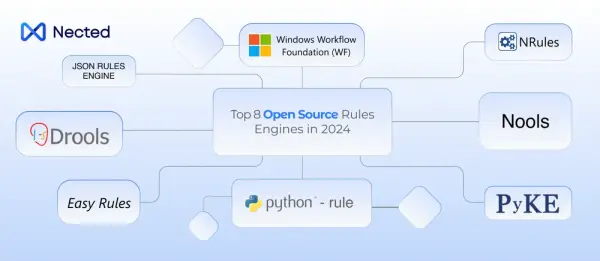




.svg)

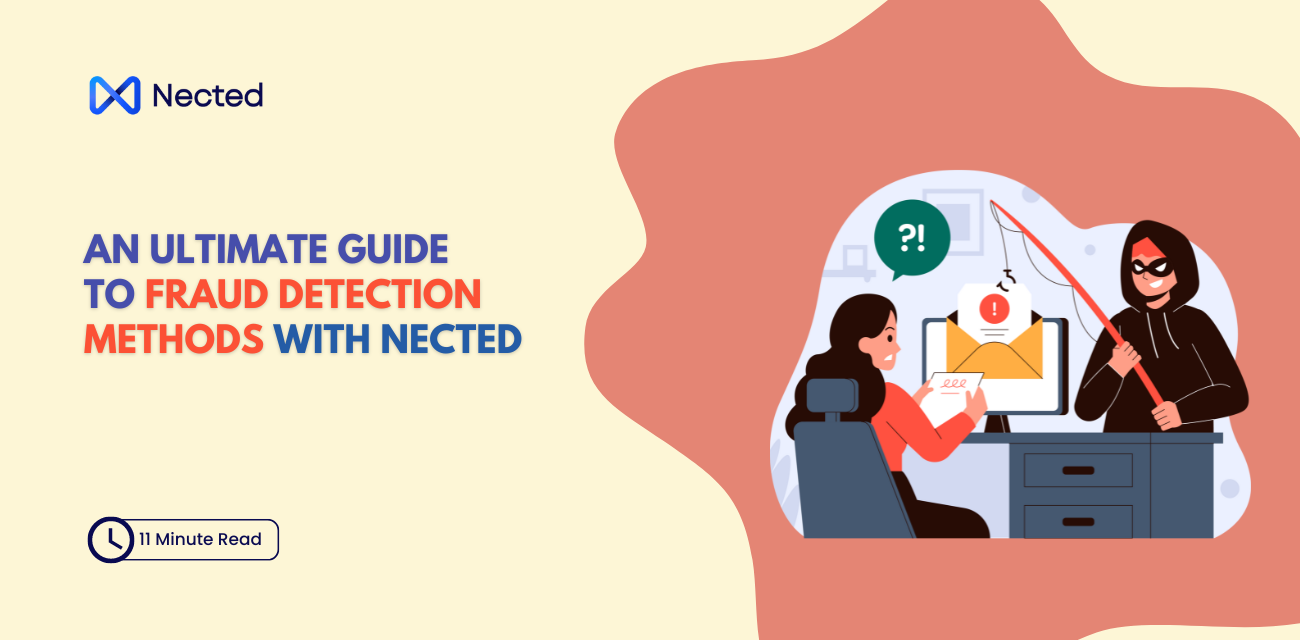

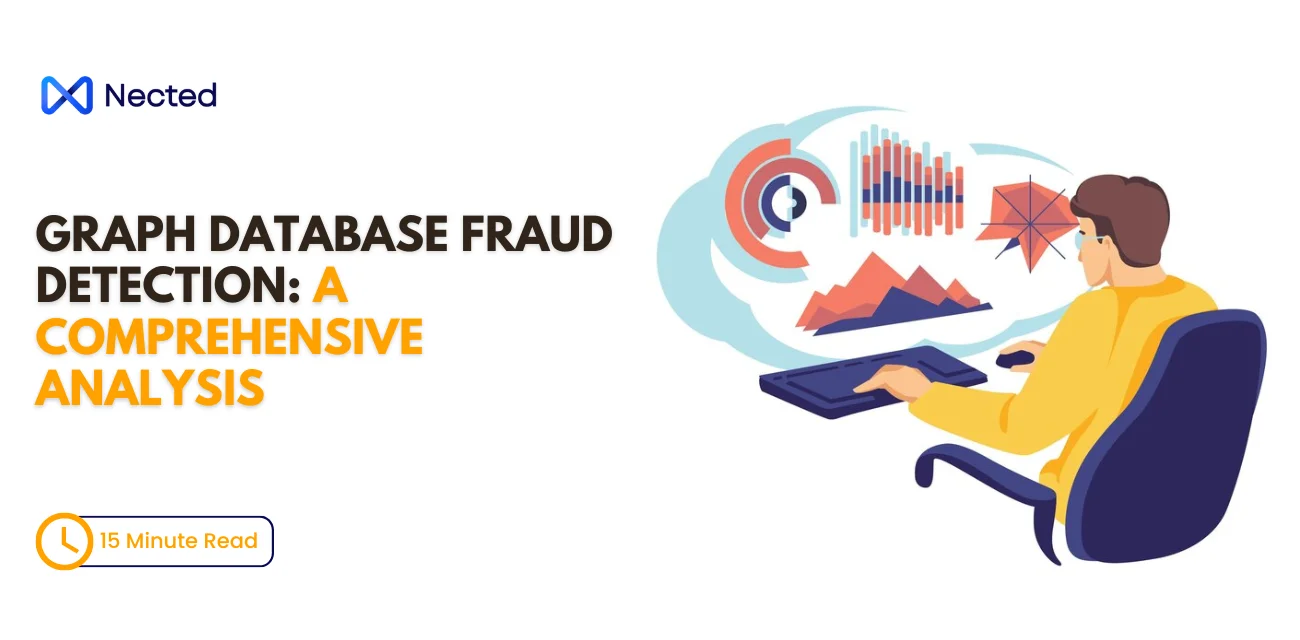
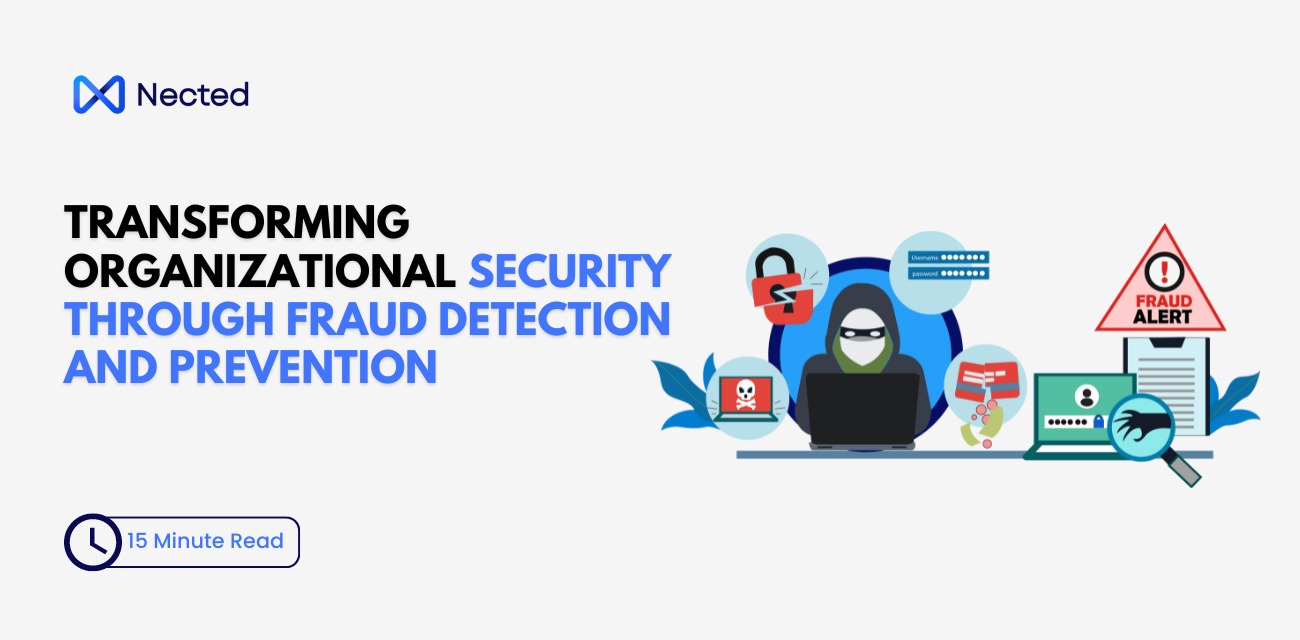
.webp)
.webp)
.webp)


.jpeg)

.svg)
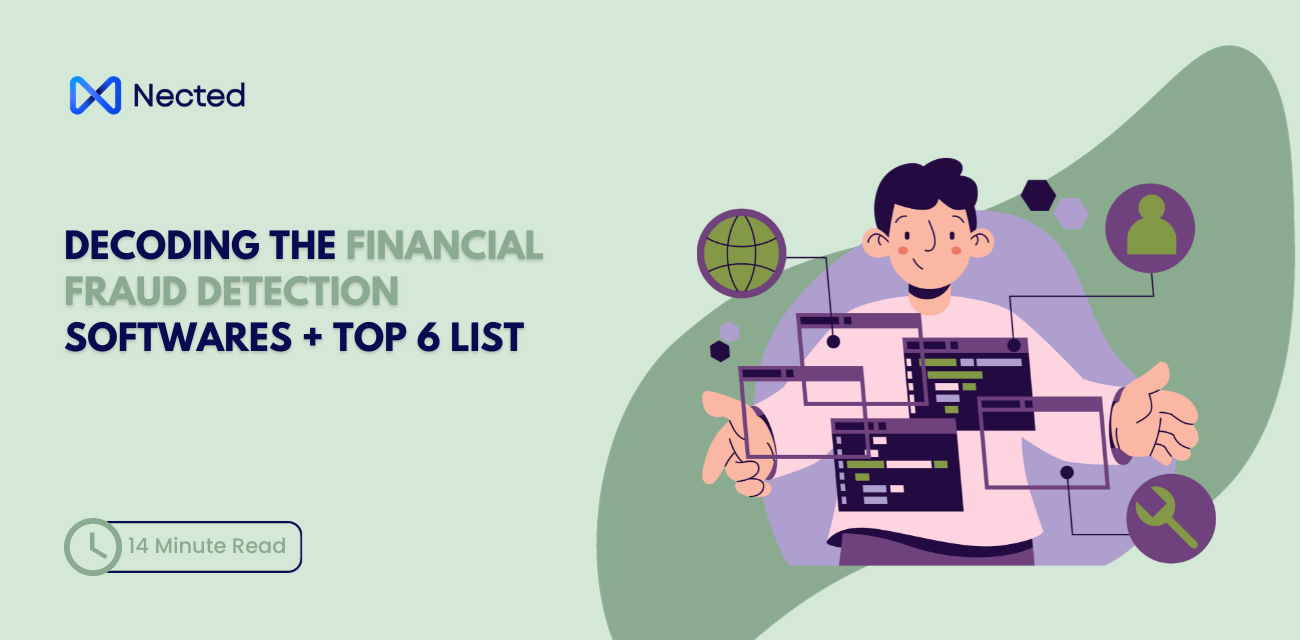




.webp)
.svg.webp)
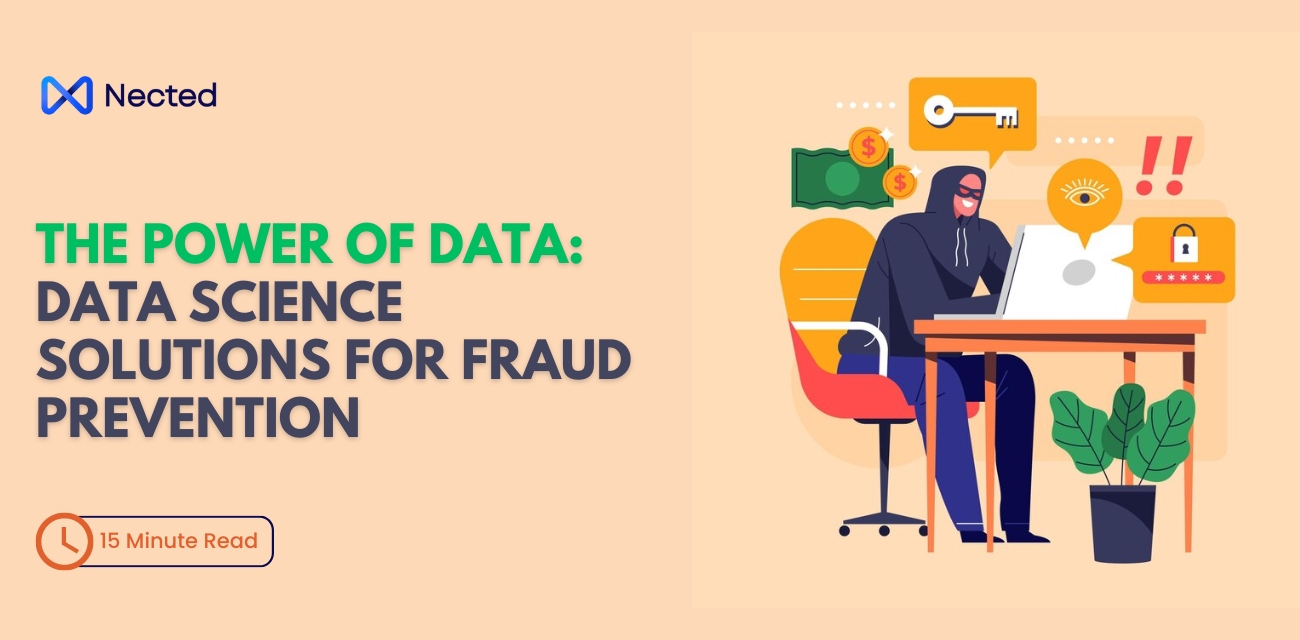
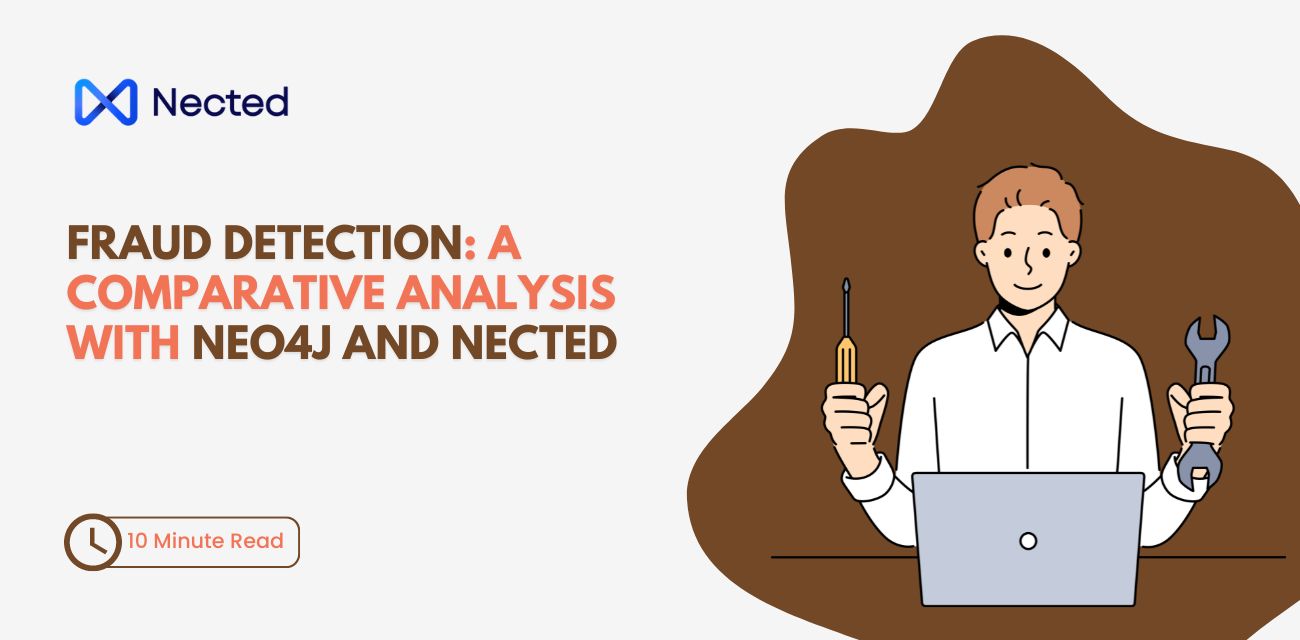
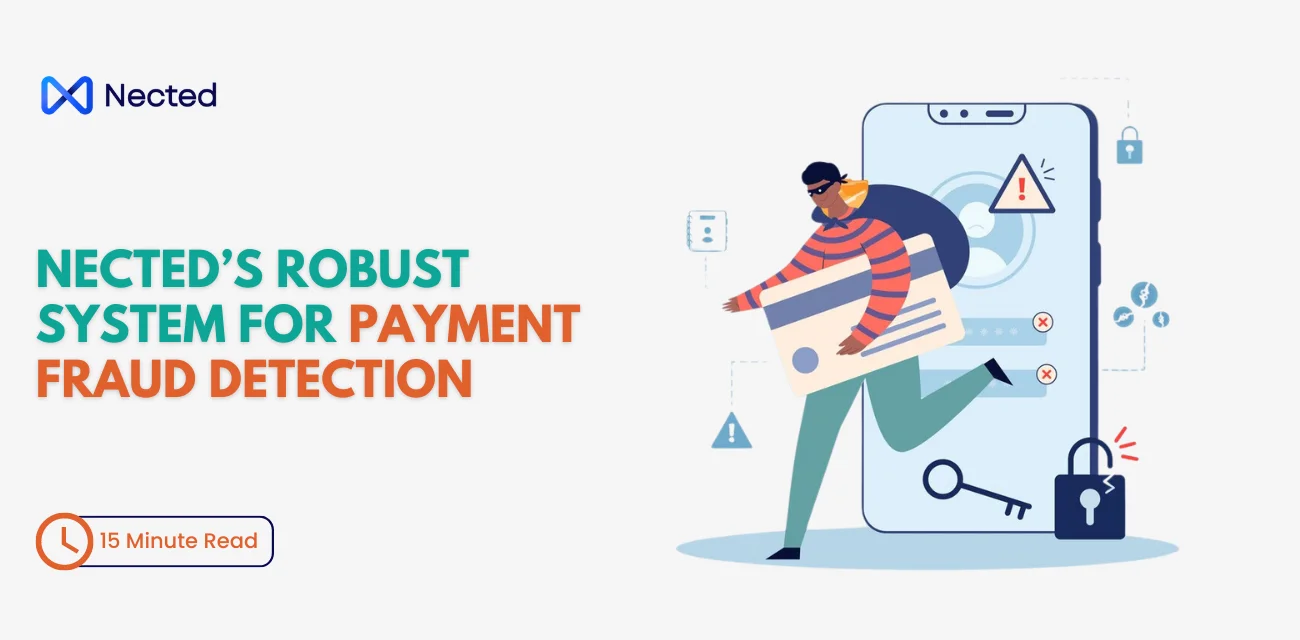

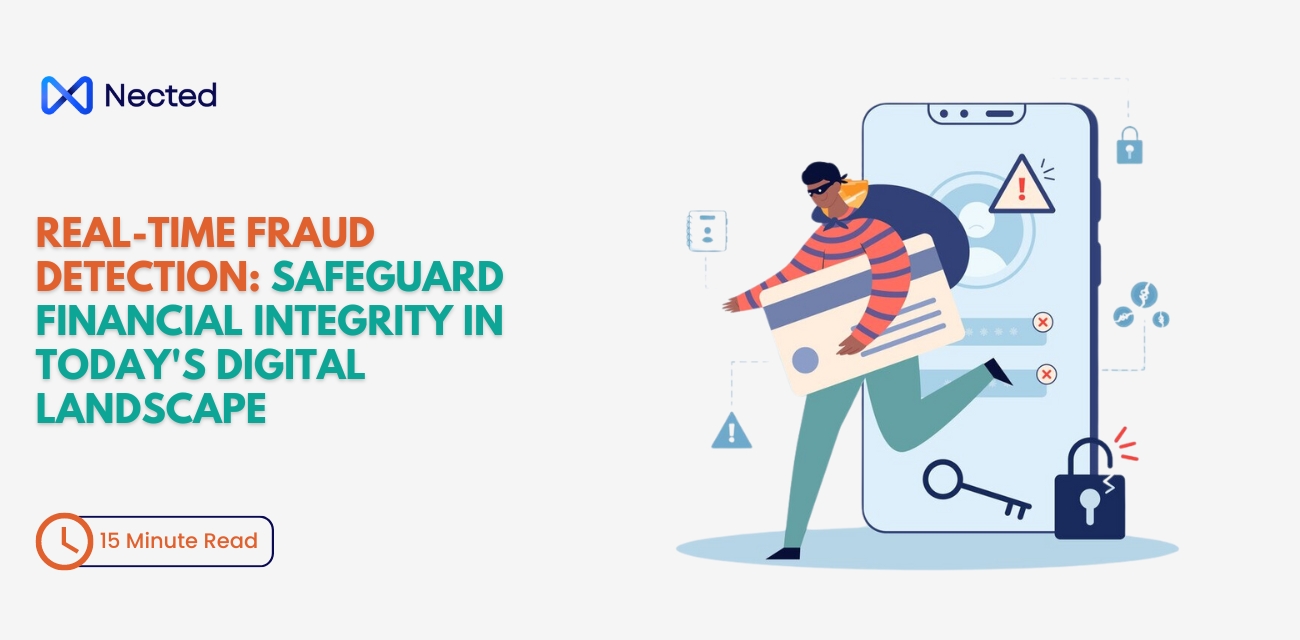

.webp)
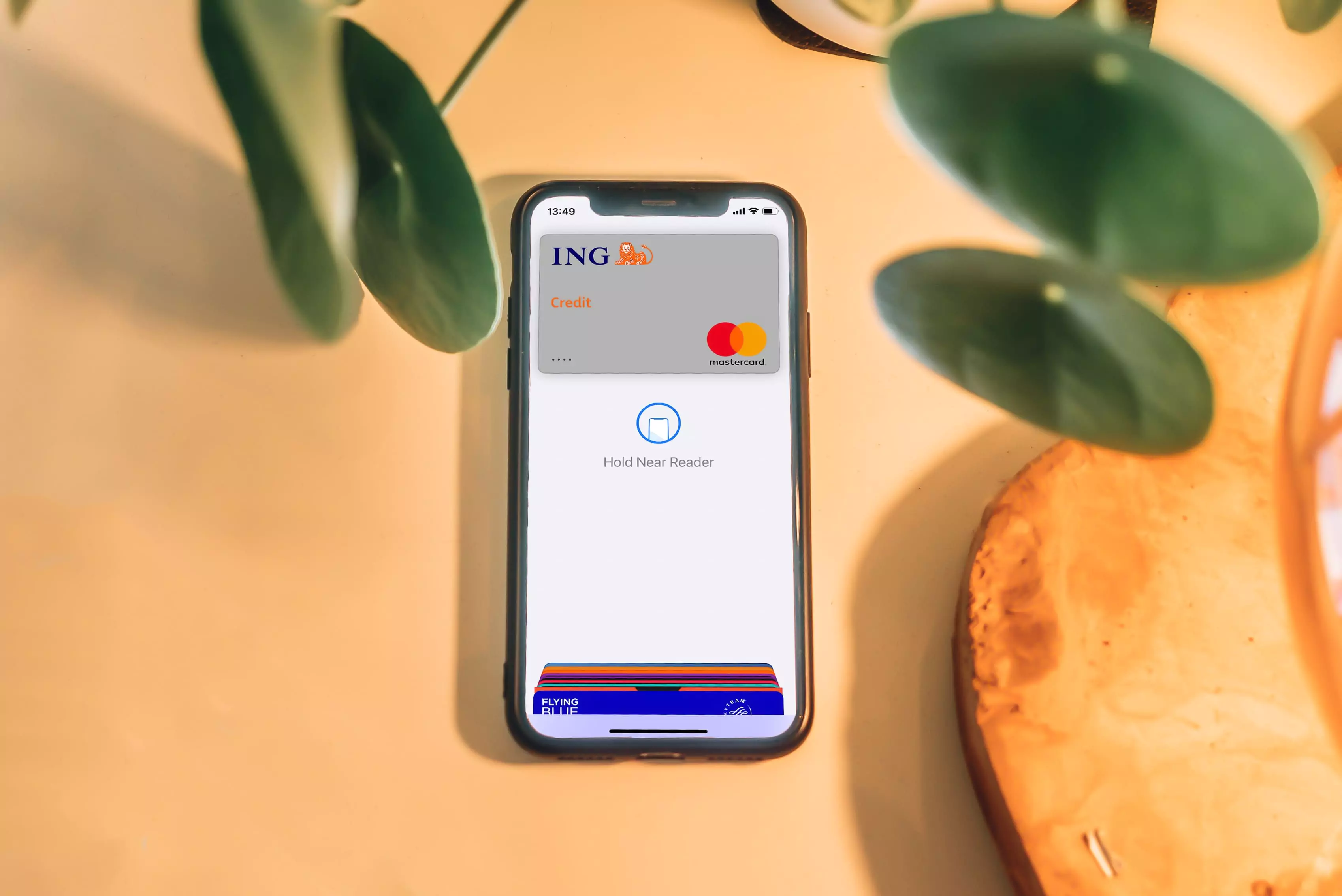

%20m.jpg)
.webp)


.webp)
.webp)


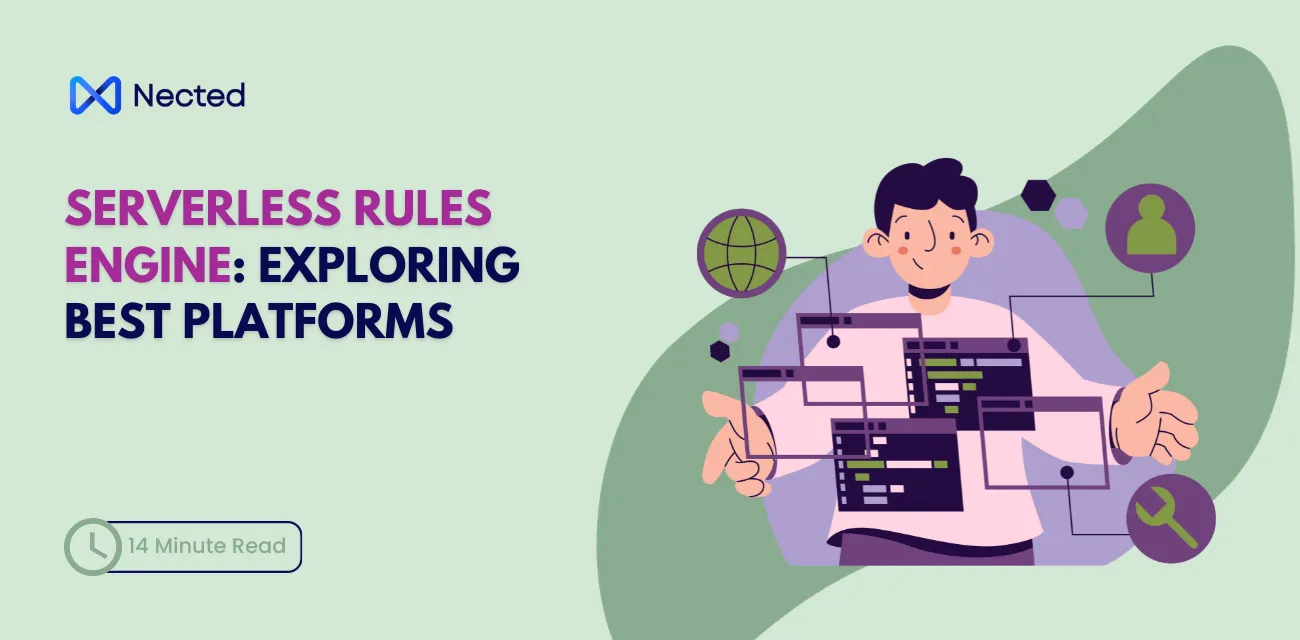



%20(1).webp)
